-

Mar
10
Interpretive Summary: Grape seed tannin extract and polyunsaturated fatty acids affect in vitro ruminal fermentation and methane production
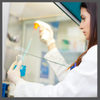
Condensed tannins can modulate methane emissions and ruminal biohydrogenation, but effects depend on type and dose.
Read more
-

Mar
10
Interpretive Summary: The effect of breed, sex, and oral meloxicam administration on pain biomarkers following hot-iron branding in Hereford and Angus calves
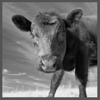
The primary objective was to examine the effects of oral meloxicam (MEL), compared with a control, administered at the time of hot-iron branding in Angus and Hereford steers and heifers.
Read more
-

Mar
10
Interpretive Summary: Whole genome sequence analyses-based assessment of virulence potential and antimicrobial susceptibilities and resistance of Enterococcus faecium strains isolated from commercial swine and cattle probiotic products

Probiotics, also called direct-fed microbials, are widely used in swine and cattle production systems, as an alternative for antibiotics. The benefits of feeding probiotic products include growth promotion and gut functional benefits.
Read more
-

Mar
10
Interpretive Summary: Limiting factors for milk production in dairy cows: perspectives from physiology and nutrition
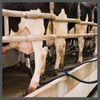
With increasing milk yields in dairy cows, potential limiting factors are intensively discussed. The present review addresses physiological and nutritional constraints that are considered limiting for milk production.
Read more
-

Mar
10
Interpretive Summary: Nutritional evaluation of fish protein hydrolysate and its application in piglet production
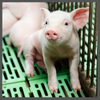
Fish protein hydrolysate (FPH), a new protein material rich in peptides and free amino acids, has the potential to serve as an alternative to traditional fish meal.
Read more
-

Mar
10
Interpretive Summary: Effects of harvest date and growth stage on triticale forages in the southwest United States: agronomic characteristics, nutritive value, energy density, and in vitro disappearance of dry matter and fiber
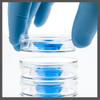
Our objectives were to screen 14 triticale cultivars for agronomic and nutritive value characteristics with specific emphasis on identifying typical, as well as deviant, responses to the calendar date and plant maturity.
Read more
-

Mar
10
Interpretive Summary: Effects of harvest date and growth stage on triticale forages in the southwest USA: kinetics of in vitro disappearance of fiber and dry matter

Unless there is an urgency for removing the triticale crop, such as those created by a feed shortage or need to establish a secondary crop, harvest management decisions should be based on plant growth stage, and not calendar date.
Read more
-

Mar
10
Interpretive Summary: Novel Synthetic oviductal fluid for Conventional Freezing 1 (SCF1) culture medium improves development and cryotolerance of in vitro produced Holstein embryos
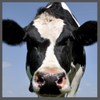
In vitro produced (IVP) bovine embryos suffer from several physiological abnormalities that interfere with their ability to withstand the freezing process, a vital step in shipping and distribution of IVP embryos.
Read more
-

Mar
03
Interpretive Summary: Intake, ruminal fermentation parameters, and apparent total-tract digestibility by beef steers consuming Pensacola bahia grass hay treated with calcium oxide
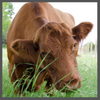
With the ever-growing desire to increase efficiency in beef cattle production, researchers have developed strategies such as treating poor-quality forages with chemicals to increase the digestibility of fiber fractions, consequently increasing their energy value for cattle feeding.
Read more
-

Mar
03
Interpretive Summary: Identify known and novel candidate genes associated with backfat thickness in Duroc pigs by large-scale genome-wide association analysis
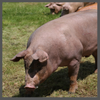
Backfat thickness (BFT) is a complex and economically important trait in the pig industry because it reflects fat deposition and can be used to measure the carcass lean meat percentage in pigs.
Read more
-

Mar
03
Interpretive Summary: Effects of a novel consensus bacterial 6-phytase variant on the apparent ileal digestibility of amino acids, total tract phosphorus retention, and tibia ash in young broilers
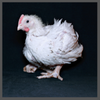
Microbial phytase is widely used in commercial broiler diets to improve digestion of phosphorus (P) and reduce its excretion into the environment. Phytase improves the digestion of phosphorus and other nutrients including amino acids (AA).
Read more
-

Mar
03
Interpretive Summary: Transcriptome analyses indicate that heat stress-induced inflammation in white adipose tissue and oxidative stress in skeletal muscle is partially moderated by zilpaterol supplementation in beef cattle
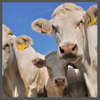
Heat stress (HS) negatively impacts livestock health and carcass quality. Supplementation of livestock with β-adrenergic agonists (β-AA) increases muscle mass and decreases fat.
Read more
-

Mar
03
Interpretive Summary: Correlations of gestational hemoglobin level, placental trace elements content, and reproductive performances in pregnant sows
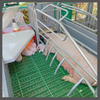
Iron deficiency and iron excess may cause adverse outcomes during pregnancy. In sows’ feed, iron is added as ferrous sulfate, ferrous glycine, or other forms to improve their reproductive performance and prevent iron-deficiency anemia in their offspring.
Read more
-

Mar
03
Interpretive Summary: Genetic parameters, heterosis, and breed effects for body condition score and mature cow weight in beef cattle
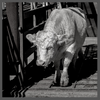
The current study estimated the genetic relationship between mature cow weight (MWT) and body condition score (BCS), heterosis, and breed effects for these traits in a crossbred beef population. In total, 25,035 and 24,522 overlapping records were available for MWT and BCS, respectively. Pedigree was available for 48,013 individuals.
Read more
-

Feb
24
White House Updates Stem Visa Policies

“Today, the Departments of State and Homeland Security are announcing new actions to advance predictability and clarity for pathways for international STEM scholars, students, researchers, and experts to contribute to innovation and job creation efforts across America,” The White House said in a press release.
Read more
-

Feb
24
USDA Gives Insight on $10B Disaster Aid

“Over the past two years, as agricultural producers have struggled with the ongoing impacts of the COVID-19 pandemic, many have been hard-hit by more frequent and more intense natural disasters,” Bonnie said. “With the help of Congress, USDA is working to deliver $10 billion in much-needed relief, including $750 million for livestock producers impacted by the severe drought.
Read more
-

Feb
24
Science Advisor Resigns After Violating Workplace-Behavior Rules

“The investigation found credible evidence of instances of multiple women having complained to other staff about negative interactions with Dr. Lander, where he spoke to them in a demeaning or abrasive way in front of other staff,” Christian Peele, the White House’s deputy director of management and administration for personnel, said in a recording obtained by Politico.
Read more
-

Feb
24
Right to Repair Act Introduced

“Manufacturers have far too much control over what farmers are allowed to do with their own equipment, and this costs farmers time and money,” said Rob Larew, President of the National Farmers Union. “Senator Tester’s bill would give farmers and independent mechanics the freedom to fix their equipment in a timely and cost-effective way.”
Read more
-

Feb
24
NCBA Releases 2022 Policy Priorities

The National Cattlemen’s Beef Association (NCAB) published its 2022 policy priorities. Announced during the 2022 Cattle Industry Convention and NCAB Trade Show, the policies emphases strengthening the economic, environmental, and social sustainability of the cattle industry.
Read more
-

Feb
24
NAMI States Changes to Packers & Stockyards Act could affect Sustainability

The North American Meat Institute (NAMI) released a statement that the Biden Administration’s Packers and Stockyards Act proposed rules could limit the abilities of the meat and poultry industry to meet sustainability goals.
Read more
 MarInterpretive Summary: Grape seed tannin extract and polyunsaturated fatty acids affect in vitro ruminal fermentation and methane production
MarInterpretive Summary: Grape seed tannin extract and polyunsaturated fatty acids affect in vitro ruminal fermentation and methane production Condensed tannins can modulate methane emissions and ruminal biohydrogenation, but effects depend on type and dose.
Condensed tannins can modulate methane emissions and ruminal biohydrogenation, but effects depend on type and dose. MarInterpretive Summary: The effect of breed, sex, and oral meloxicam administration on pain biomarkers following hot-iron branding in Hereford and Angus calves
MarInterpretive Summary: The effect of breed, sex, and oral meloxicam administration on pain biomarkers following hot-iron branding in Hereford and Angus calves The primary objective was to examine the effects of oral meloxicam (MEL), compared with a control, administered at the time of hot-iron branding in Angus and Hereford steers and heifers.
The primary objective was to examine the effects of oral meloxicam (MEL), compared with a control, administered at the time of hot-iron branding in Angus and Hereford steers and heifers. MarInterpretive Summary: Whole genome sequence analyses-based assessment of virulence potential and antimicrobial susceptibilities and resistance of Enterococcus faecium strains isolated from commercial swine and cattle probiotic products
MarInterpretive Summary: Whole genome sequence analyses-based assessment of virulence potential and antimicrobial susceptibilities and resistance of Enterococcus faecium strains isolated from commercial swine and cattle probiotic products Probiotics, also called direct-fed microbials, are widely used in swine and cattle production systems, as an alternative for antibiotics. The benefits of feeding probiotic products include growth promotion and gut functional benefits.
Probiotics, also called direct-fed microbials, are widely used in swine and cattle production systems, as an alternative for antibiotics. The benefits of feeding probiotic products include growth promotion and gut functional benefits. MarInterpretive Summary: Limiting factors for milk production in dairy cows: perspectives from physiology and nutrition
MarInterpretive Summary: Limiting factors for milk production in dairy cows: perspectives from physiology and nutrition With increasing milk yields in dairy cows, potential limiting factors are intensively discussed. The present review addresses physiological and nutritional constraints that are considered limiting for milk production.
With increasing milk yields in dairy cows, potential limiting factors are intensively discussed. The present review addresses physiological and nutritional constraints that are considered limiting for milk production. MarInterpretive Summary: Nutritional evaluation of fish protein hydrolysate and its application in piglet production
MarInterpretive Summary: Nutritional evaluation of fish protein hydrolysate and its application in piglet production Fish protein hydrolysate (FPH), a new protein material rich in peptides and free amino acids, has the potential to serve as an alternative to traditional fish meal.
Fish protein hydrolysate (FPH), a new protein material rich in peptides and free amino acids, has the potential to serve as an alternative to traditional fish meal. MarInterpretive Summary: Effects of harvest date and growth stage on triticale forages in the southwest United States: agronomic characteristics, nutritive value, energy density, and in vitro disappearance of dry matter and fiber
MarInterpretive Summary: Effects of harvest date and growth stage on triticale forages in the southwest United States: agronomic characteristics, nutritive value, energy density, and in vitro disappearance of dry matter and fiber Our objectives were to screen 14 triticale cultivars for agronomic and nutritive value characteristics with specific emphasis on identifying typical, as well as deviant, responses to the calendar date and plant maturity.
Our objectives were to screen 14 triticale cultivars for agronomic and nutritive value characteristics with specific emphasis on identifying typical, as well as deviant, responses to the calendar date and plant maturity. MarInterpretive Summary: Effects of harvest date and growth stage on triticale forages in the southwest USA: kinetics of in vitro disappearance of fiber and dry matter
MarInterpretive Summary: Effects of harvest date and growth stage on triticale forages in the southwest USA: kinetics of in vitro disappearance of fiber and dry matter Unless there is an urgency for removing the triticale crop, such as those created by a feed shortage or need to establish a secondary crop, harvest management decisions should be based on plant growth stage, and not calendar date.
Unless there is an urgency for removing the triticale crop, such as those created by a feed shortage or need to establish a secondary crop, harvest management decisions should be based on plant growth stage, and not calendar date. MarInterpretive Summary: Novel Synthetic oviductal fluid for Conventional Freezing 1 (SCF1) culture medium improves development and cryotolerance of in vitro produced Holstein embryos
MarInterpretive Summary: Novel Synthetic oviductal fluid for Conventional Freezing 1 (SCF1) culture medium improves development and cryotolerance of in vitro produced Holstein embryos In vitro produced (IVP) bovine embryos suffer from several physiological abnormalities that interfere with their ability to withstand the freezing process, a vital step in shipping and distribution of IVP embryos.
In vitro produced (IVP) bovine embryos suffer from several physiological abnormalities that interfere with their ability to withstand the freezing process, a vital step in shipping and distribution of IVP embryos. MarInterpretive Summary: Intake, ruminal fermentation parameters, and apparent total-tract digestibility by beef steers consuming Pensacola bahia grass hay treated with calcium oxide
MarInterpretive Summary: Intake, ruminal fermentation parameters, and apparent total-tract digestibility by beef steers consuming Pensacola bahia grass hay treated with calcium oxide With the ever-growing desire to increase efficiency in beef cattle production, researchers have developed strategies such as treating poor-quality forages with chemicals to increase the digestibility of fiber fractions, consequently increasing their energy value for cattle feeding.
With the ever-growing desire to increase efficiency in beef cattle production, researchers have developed strategies such as treating poor-quality forages with chemicals to increase the digestibility of fiber fractions, consequently increasing their energy value for cattle feeding. MarInterpretive Summary: Identify known and novel candidate genes associated with backfat thickness in Duroc pigs by large-scale genome-wide association analysis
MarInterpretive Summary: Identify known and novel candidate genes associated with backfat thickness in Duroc pigs by large-scale genome-wide association analysis Backfat thickness (BFT) is a complex and economically important trait in the pig industry because it reflects fat deposition and can be used to measure the carcass lean meat percentage in pigs.
Backfat thickness (BFT) is a complex and economically important trait in the pig industry because it reflects fat deposition and can be used to measure the carcass lean meat percentage in pigs. MarInterpretive Summary: Effects of a novel consensus bacterial 6-phytase variant on the apparent ileal digestibility of amino acids, total tract phosphorus retention, and tibia ash in young broilers
MarInterpretive Summary: Effects of a novel consensus bacterial 6-phytase variant on the apparent ileal digestibility of amino acids, total tract phosphorus retention, and tibia ash in young broilers Microbial phytase is widely used in commercial broiler diets to improve digestion of phosphorus (P) and reduce its excretion into the environment. Phytase improves the digestion of phosphorus and other nutrients including amino acids (AA).
Microbial phytase is widely used in commercial broiler diets to improve digestion of phosphorus (P) and reduce its excretion into the environment. Phytase improves the digestion of phosphorus and other nutrients including amino acids (AA). MarInterpretive Summary: Transcriptome analyses indicate that heat stress-induced inflammation in white adipose tissue and oxidative stress in skeletal muscle is partially moderated by zilpaterol supplementation in beef cattle
MarInterpretive Summary: Transcriptome analyses indicate that heat stress-induced inflammation in white adipose tissue and oxidative stress in skeletal muscle is partially moderated by zilpaterol supplementation in beef cattle Heat stress (HS) negatively impacts livestock health and carcass quality. Supplementation of livestock with β-adrenergic agonists (β-AA) increases muscle mass and decreases fat.
Heat stress (HS) negatively impacts livestock health and carcass quality. Supplementation of livestock with β-adrenergic agonists (β-AA) increases muscle mass and decreases fat. MarInterpretive Summary: Correlations of gestational hemoglobin level, placental trace elements content, and reproductive performances in pregnant sows
MarInterpretive Summary: Correlations of gestational hemoglobin level, placental trace elements content, and reproductive performances in pregnant sows Iron deficiency and iron excess may cause adverse outcomes during pregnancy. In sows’ feed, iron is added as ferrous sulfate, ferrous glycine, or other forms to improve their reproductive performance and prevent iron-deficiency anemia in their offspring.
Iron deficiency and iron excess may cause adverse outcomes during pregnancy. In sows’ feed, iron is added as ferrous sulfate, ferrous glycine, or other forms to improve their reproductive performance and prevent iron-deficiency anemia in their offspring. MarInterpretive Summary: Genetic parameters, heterosis, and breed effects for body condition score and mature cow weight in beef cattle
MarInterpretive Summary: Genetic parameters, heterosis, and breed effects for body condition score and mature cow weight in beef cattle The current study estimated the genetic relationship between mature cow weight (MWT) and body condition score (BCS), heterosis, and breed effects for these traits in a crossbred beef population. In total, 25,035 and 24,522 overlapping records were available for MWT and BCS, respectively. Pedigree was available for 48,013 individuals.
The current study estimated the genetic relationship between mature cow weight (MWT) and body condition score (BCS), heterosis, and breed effects for these traits in a crossbred beef population. In total, 25,035 and 24,522 overlapping records were available for MWT and BCS, respectively. Pedigree was available for 48,013 individuals. FebWhite House Updates Stem Visa Policies
FebWhite House Updates Stem Visa Policies “Today, the Departments of State and Homeland Security are announcing new actions to advance predictability and clarity for pathways for international STEM scholars, students, researchers, and experts to contribute to innovation and job creation efforts across America,” The White House said in a press release.
“Today, the Departments of State and Homeland Security are announcing new actions to advance predictability and clarity for pathways for international STEM scholars, students, researchers, and experts to contribute to innovation and job creation efforts across America,” The White House said in a press release. FebUSDA Gives Insight on $10B Disaster Aid
FebUSDA Gives Insight on $10B Disaster Aid “Over the past two years, as agricultural producers have struggled with the ongoing impacts of the COVID-19 pandemic, many have been hard-hit by more frequent and more intense natural disasters,” Bonnie said. “With the help of Congress, USDA is working to deliver $10 billion in much-needed relief, including $750 million for livestock producers impacted by the severe drought.
“Over the past two years, as agricultural producers have struggled with the ongoing impacts of the COVID-19 pandemic, many have been hard-hit by more frequent and more intense natural disasters,” Bonnie said. “With the help of Congress, USDA is working to deliver $10 billion in much-needed relief, including $750 million for livestock producers impacted by the severe drought. FebScience Advisor Resigns After Violating Workplace-Behavior Rules
FebScience Advisor Resigns After Violating Workplace-Behavior Rules “The investigation found credible evidence of instances of multiple women having complained to other staff about negative interactions with Dr. Lander, where he spoke to them in a demeaning or abrasive way in front of other staff,” Christian Peele, the White House’s deputy director of management and administration for personnel, said in a recording obtained by Politico.
“The investigation found credible evidence of instances of multiple women having complained to other staff about negative interactions with Dr. Lander, where he spoke to them in a demeaning or abrasive way in front of other staff,” Christian Peele, the White House’s deputy director of management and administration for personnel, said in a recording obtained by Politico. FebRight to Repair Act Introduced
FebRight to Repair Act Introduced “Manufacturers have far too much control over what farmers are allowed to do with their own equipment, and this costs farmers time and money,” said Rob Larew, President of the National Farmers Union. “Senator Tester’s bill would give farmers and independent mechanics the freedom to fix their equipment in a timely and cost-effective way.”
“Manufacturers have far too much control over what farmers are allowed to do with their own equipment, and this costs farmers time and money,” said Rob Larew, President of the National Farmers Union. “Senator Tester’s bill would give farmers and independent mechanics the freedom to fix their equipment in a timely and cost-effective way.” FebNCBA Releases 2022 Policy Priorities
FebNCBA Releases 2022 Policy Priorities The National Cattlemen’s Beef Association (NCAB) published its 2022 policy priorities. Announced during the 2022 Cattle Industry Convention and NCAB Trade Show, the policies emphases strengthening the economic, environmental, and social sustainability of the cattle industry.
The National Cattlemen’s Beef Association (NCAB) published its 2022 policy priorities. Announced during the 2022 Cattle Industry Convention and NCAB Trade Show, the policies emphases strengthening the economic, environmental, and social sustainability of the cattle industry. FebNAMI States Changes to Packers & Stockyards Act could affect Sustainability
FebNAMI States Changes to Packers & Stockyards Act could affect Sustainability The North American Meat Institute (NAMI) released a statement that the Biden Administration’s Packers and Stockyards Act proposed rules could limit the abilities of the meat and poultry industry to meet sustainability goals.
The North American Meat Institute (NAMI) released a statement that the Biden Administration’s Packers and Stockyards Act proposed rules could limit the abilities of the meat and poultry industry to meet sustainability goals.



